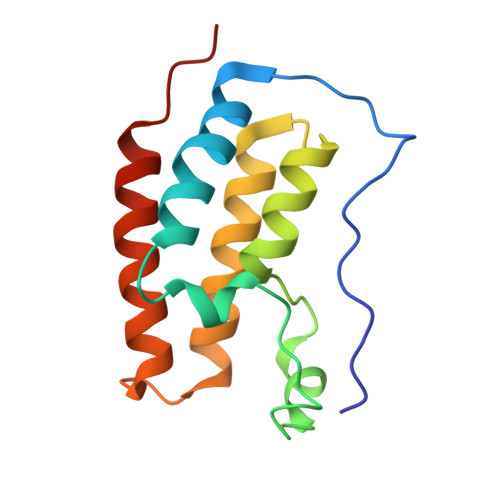Dual kinase-bromodomain inhibitors for rationally designed polypharmacology.
Ciceri, P., Muller, S., O'Mahony, A., Fedorov, O., Filippakopoulos, P., Hunt, J.P., Lasater, E.A., Pallares, G., Picaud, S., Wells, C., Martin, S., Wodicka, L.M., Shah, N.P., Treiber, D.K., Knapp, S.(2014) Nat Chem Biol 10: 305-312
- PubMed: 24584101
- DOI: https://doi.org/10.1038/nchembio.1471
- Primary Citation of Related Structures:
4OGI, 4OGJ - PubMed Abstract:
Concomitant inhibition of multiple cancer-driving kinases is an established strategy to improve the durability of clinical responses to targeted therapies. The difficulty of discovering kinase inhibitors with an appropriate multitarget profile has, however, necessitated the application of combination therapies, which can pose major clinical development challenges. Epigenetic reader domains of the bromodomain family have recently emerged as new targets for cancer therapy. Here we report that several clinical kinase inhibitors also inhibit bromodomains with therapeutically relevant potencies and are best classified as dual kinase-bromodomain inhibitors. Nanomolar activity on BRD4 by BI-2536 and TG-101348, which are clinical PLK1 and JAK2-FLT3 kinase inhibitors, respectively, is particularly noteworthy as these combinations of activities on independent oncogenic pathways exemplify a new strategy for rational single-agent polypharmacological targeting. Furthermore, structure-activity relationships and co-crystal structures identify design features that enable a general platform for the rational design of dual kinase-bromodomain inhibitors.
Organizational Affiliation:
1] KINOMEscan Division of DiscoveRx Corporation, San Diego, California, USA. [2].
















